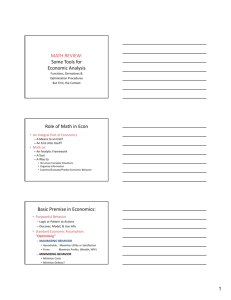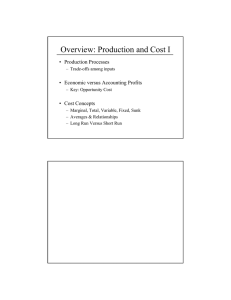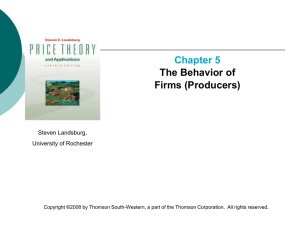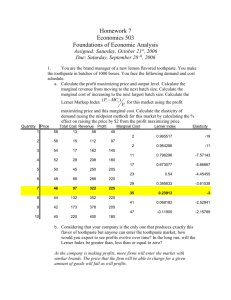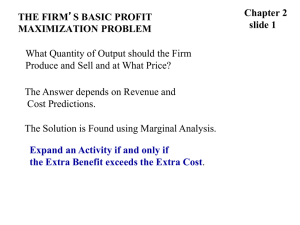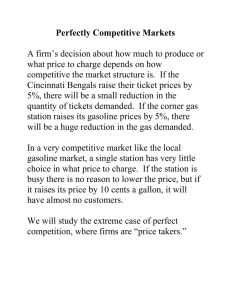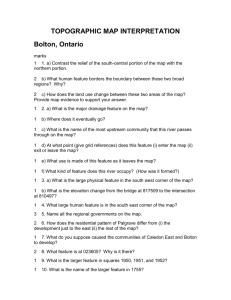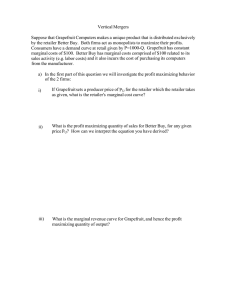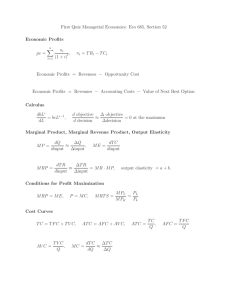Extra Questions, First Quiz Managerial Economics: Eco 685 Quiz
advertisement
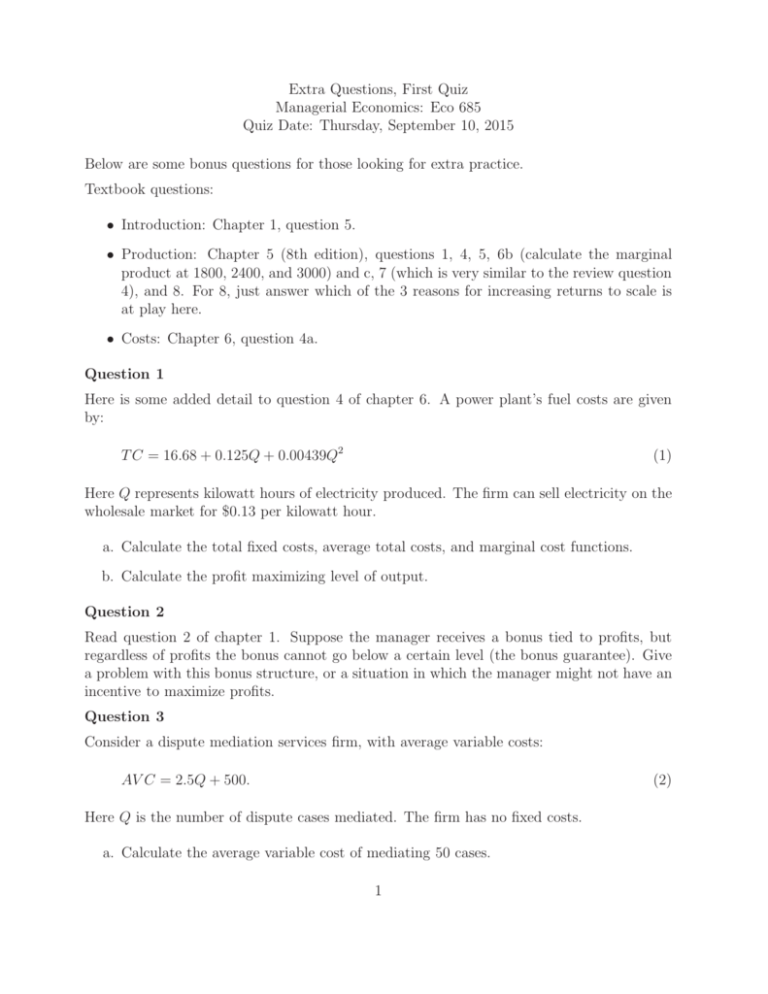
Extra Questions, First Quiz Managerial Economics: Eco 685 Quiz Date: Thursday, September 10, 2015 Below are some bonus questions for those looking for extra practice. Textbook questions: • Introduction: Chapter 1, question 5. • Production: Chapter 5 (8th edition), questions 1, 4, 5, 6b (calculate the marginal product at 1800, 2400, and 3000) and c, 7 (which is very similar to the review question 4), and 8. For 8, just answer which of the 3 reasons for increasing returns to scale is at play here. • Costs: Chapter 6, question 4a. Question 1 Here is some added detail to question 4 of chapter 6. A power plant’s fuel costs are given by: T C = 16.68 + 0.125Q + 0.00439Q2 (1) Here Q represents kilowatt hours of electricity produced. The firm can sell electricity on the wholesale market for $0.13 per kilowatt hour. a. Calculate the total fixed costs, average total costs, and marginal cost functions. b. Calculate the profit maximizing level of output. Question 2 Read question 2 of chapter 1. Suppose the manager receives a bonus tied to profits, but regardless of profits the bonus cannot go below a certain level (the bonus guarantee). Give a problem with this bonus structure, or a situation in which the manager might not have an incentive to maximize profits. Question 3 Consider a dispute mediation services firm, with average variable costs: AV C = 2.5Q + 500. (2) Here Q is the number of dispute cases mediated. The firm has no fixed costs. a. Calculate the average variable cost of mediating 50 cases. 1 b. Calculate the total cost of mediating 50 cases. c. Calculate the marginal cost of mediating 50 cases. Question 4 Which statements are true? (Answer true/false for each): a. Economic Profit is more than accounting profit. b. The production maximizing level of an input is greater than the profit maximizing level of the input. c. Average fixed costs decline as the number of units produced increase. d. Fixed costs are always sunk. e. Sunk costs are always fixed. f. Opportunity costs are accounting costs plus the accounting profit of the next best option. Question 5 What is one way outsourcing can help small firms, according to the notes? Question 6 Suppose MRT S > PL /PK . Which of the following are true? (Answer true/false for each): a. Labor is inexpensive relative to capital. b. Capital is relatively more productive than labor. c. The price of labor must be greater than the price of capital. d. Profits rise if one unit of labor is replaced by MRT S capital. e. Costs are not changed if one unit of capital is replaced by PK /PL units of labor. Question 7 Give one reason why marginal costs might initially fall as Q increases. 2
